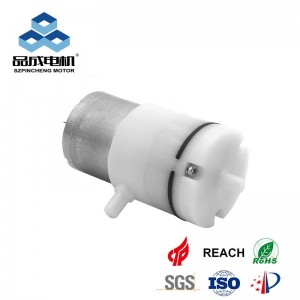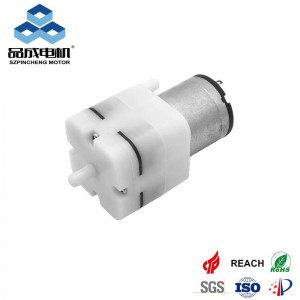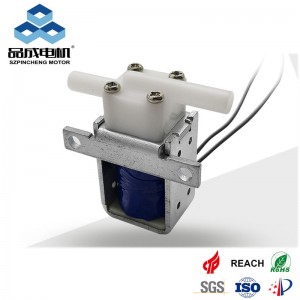If you're working with a small vacuum pump, a diaphragm vacuum pump, or a compact 12 volt vacuum pump, this is the most fundamental question to understand: does it increase or decrease pressure? The short answer is: A vacuum pump decreases pressure. It actively removes gas molecules (like air) from a sealed volume to create a low-pressure environment, or a vacuum.
This article will break down the science behind how these pumps work, the role of pressure, and why this principle is critical for your applications.
Understanding Pressure: The Basics
At sea level, we live under a layer of air that exerts pressure—about 14.7 pounds per square inch (PSI) or 101.3 kilopascals (kPa). This is atmospheric pressure. A vacuum pump's job is to lower the pressure inside a closed chamber below this atmospheric level.
-
Decreasing Pressure (Creating Vacuum): Removing molecules from a space means fewer collisions with the walls of the container. This lower number of collisions results in lower pressure.
-
Increasing Pressure (Compression): Adding more molecules or compressing them into a smaller space increases the number of collisions and thus increases pressure. This is the job of a compressor or an air pump.
How a Diaphragm Vacuum Pump Decreases Pressure
A diaphragm vacuum pump is a perfect example to illustrate this. It is a type of positive displacement pump. Here’s how it works to decrease pressure:
-
Intake Stroke: The motor moves the diaphragm to expand the pump chamber's volume. This expansion creates a low-pressure area inside the chamber.
-
Suction: The higher outside atmospheric pressure forces air from your connected system (e.g., a sealed bag or a chamber) into the low-pressure pump chamber through an inlet valve. This is the pump sucking air out.
-
Exhaust Stroke: The diaphragm moves back, decreasing the chamber's volume and compressing the trapped air.
-
Expulsion: The now-higher pressure inside the chamber forces the outlet valve open, and the air is pushed out into the atmosphere.
This cycle repeats dozens of times per second, continuously removing air molecules from your system and thereby decreasing its internal pressure.
The Role of a 12 Volt Vacuum Pump
A 12 volt vacuum pump, often a small diaphragm pump, operates on this exact same principle. Its compact size and ability to run on a common DC power source (like a car battery or power supply) make it ideal for portable or embedded applications where decreasing pressure is required, such as:
-
Medical Devices: Removing air to create suction for wound drainage or surgical tools.
-
Food Packaging: Evacuating air from bags to preserve freshness (vacuum sealing).
-
Automotive: Assisting brake boosters or controlling emissions systems.
-
Electronics Manufacturing: Holding components in place with vacuum suction cups.
Key Specifications: Measuring Pressure Decrease
When selecting a small vacuum pump, you'll see specifications that define its ability to decrease pressure:
-
Ultimate Vacuum: The lowest pressure the pump can achieve, measured in inches of Mercury (inHg), kPa, or Torr. A higher inHg value means a stronger vacuum (e.g., 20 inHg is a greater pressure decrease than 15 inHg).
-
Flow Rate (CFM or LPM): How quickly the pump can remove air. A higher flow rate will decrease pressure faster in a larger volume.
Conclusion: It’s All About Removal
To be perfectly clear: a vacuum pump's sole function is to decrease pressure by removing gas molecules from a closed system. Whether it's a powerful industrial unit or a miniature 12 volt vacuum pump for a DIY project, the core scientific principle remains the same. Understanding this helps you choose the right pump—like a efficient diaphragm vacuum pump—based on how much you need the pressure decreased and how quickly you need it done for your specific application.
Keywords used throughout: small vacuum pump, diaphragm vacuum pump, 12 volt vacuum pump, decrease pressure, vacuum, atmospheric pressure, ultimate vacuum.
you like also all
Post time: Sep-16-2025




